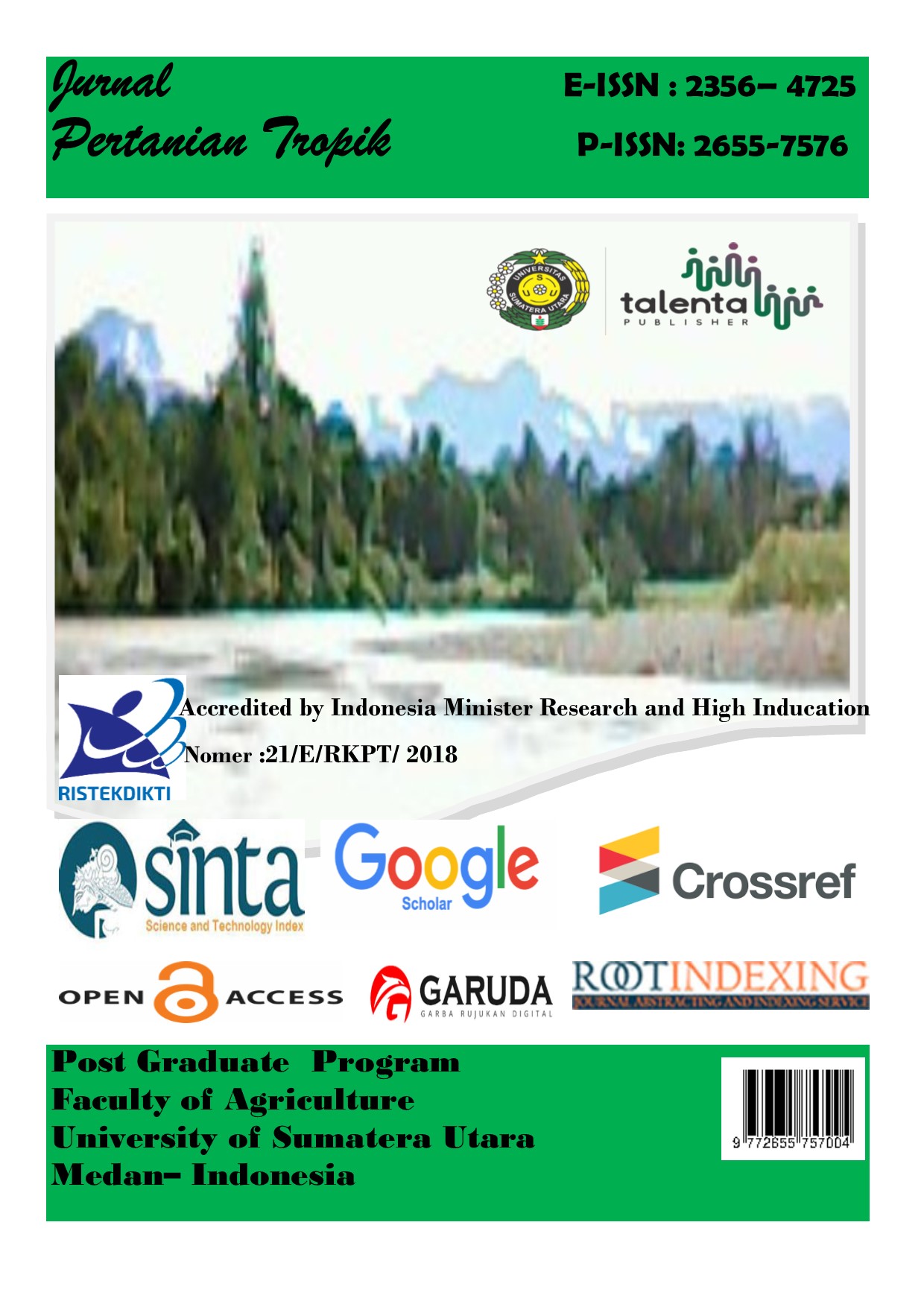Rice Ratoon Physiology: Effectiveness of Application N P K and Dolomite on Lowland Paddy
DOI:
https://doi.org/10.32734/jopt.v8i2.6548Abstract
The yield of ratoon rice technology has the potential to match the production of the main crop or the yield of the first crop. As a result of continuous chemical fertilization, the paddy soil becomes acidic. This study aims to obtain information on the effectiveness of neutralizing soil pH and fertilizing nutrients N, P, and K in increasing the yield of ratoon rice. The design used was a randomized block design with one factor, namely fertilization, there were 7 types of fertilization treatment for rice plants, namely N (p1), P (p2), K (p3), N + Neutral (p1 Neutral), P + Neutral (Rice Ratoon Physiology: Effectiveness of application N P K and Dolomite On Lowland paddy Neutral), K + Neutral (p3 Neutral) and NPK + Neutral (P4). Observations were made on the growth and production characteristics of the main and ratoon plants as well as on ratoon roots. The results showed that the application of nutrients to the soil with a neutral pH had a significant effect on the growth and production of the main rice plants and ratoons. This study proves that neutralizing soil pH plays an important role in the effectiveness of fertilizing N, P, and K nutrients that are ready to be absorbed by ratoon rice plants.
Downloads
Downloads
Published
How to Cite
Issue
Section
License
Copyright (c) 2021 Jurnal Pertanian Tropik

This work is licensed under a Creative Commons Attribution-ShareAlike 4.0 International License.






















